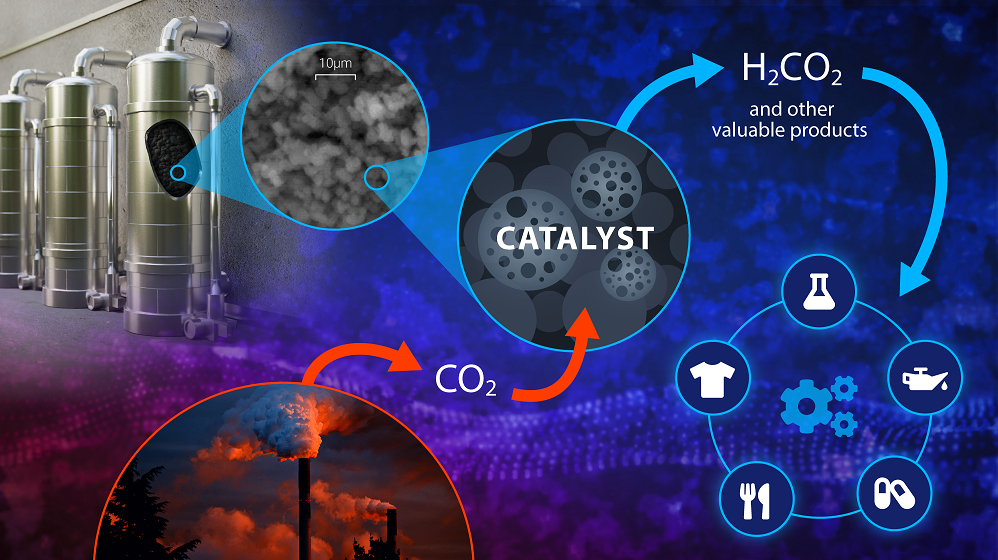Oak Ridge National Laboratory (ORNL) recently developed a dual functional porous catalytic polymer material that simultaneously captures and catalytically converts CO2 to a value-added, easily transportable liquid product, i.e. formic acid. The project will scale up the materials and design a scalable flow bed reactor system. Reactor modeling, including MFiX simulations in collaboration with NETL, will be employed to understand sorption, kinetics and thermodynamics throughout the process to enhance reactor design, while technoeconomic and life cycle analysis will guide and facilitate the evaluation of economic competitiveness of the alternative formic acid production pathway for commercial scale production.
Project Benefits
Reactive capture and conversion (RCC) is distinct from conventional capture technologies in that the captured CO2 is either regenerated, compressed, transported for further use or conversion, or stored as pure CO2. The proposed technology based on the novel, dual functional polymeric material will reduce energy and infrastructure costs associated with capture, separation and transportation, and produce value-added chemicals in one step. The integration of capture and conversion will significantly improve the techno-economic feasibility of the technology, validating a more promising prospect compared to conventional, independent capture or conversion technologies.
Contact Information
Principal Investigator — Michelle Kidder (ki*****@**nl.gov)


